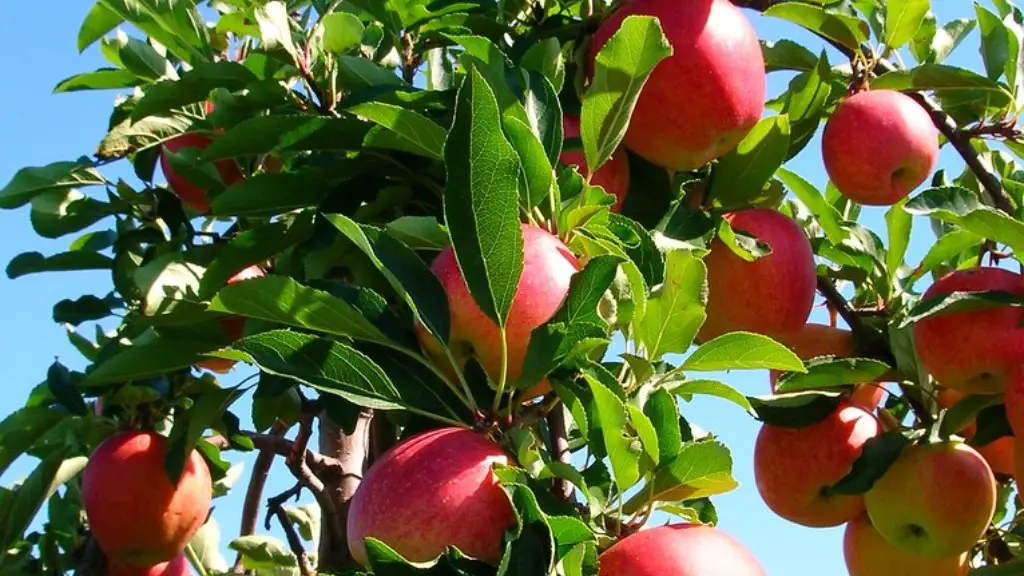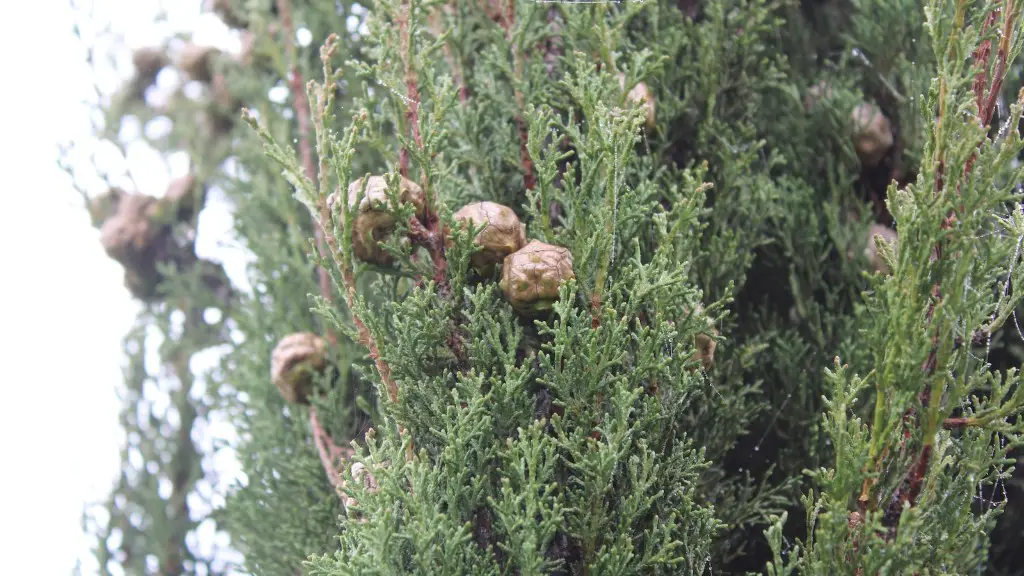Whether or not an apple tree will produce apples in a given year is dependent on multiple factors. The most important of these factors is the tree’s overall health. In the case of a tree not producing any apples, this article will explore some of the various factors that may have resulted in this outcome.
One of the most important factors to consider is the tree’s environmental conditions. Apple trees require a certain level of nutrient support, exposure to sunlight, adequate drainage, and watering to produce fruits. Therefore, a lack of any of these components can result in the apple tree not producing any fruits.
In addition, the age and size of the tree can also have a significant impact. Apple trees are typically slow to begin producing crops, and often require several years to reach full maturity. If the tree has not had enough time to mature, it may not be able to produce fruits, as it may still be too young.
The type of apple tree in question can also play a factor. Some apple trees are more prone to not producing fruits than others. In addition, the variety of apple can have an effect, as some varieties may be better suited to the local climate, soil, or environment than others.
Finally, the amount of pollination the tree receives can influence whether or not it is able to produce fruits. Apple trees require pollination from bees in order for them to set fruit, so insufficient or poor pollination can reduce the amount of fruit the tree is able to set.
Weather Conditions
Weather conditions can also be a major influencing factor when it comes to apple tree production. For example, very cold or hot temperatures can adversely affect the tree’s ability to pollinate and set fruits, while heavy rains or even drought can reduce the amount of available nutrients that the tree is able to absorb.
Apple trees are also vulnerable to frost damage, which can severely reduce the amount of buds, blooms and fruits the tree sets. In addition, adverse wind for long periods of time can reduce the number of insects that are able to carry pollen from flower to flower, as well as damage any flower present on the tree.
The timing of any weather condition is also important to consider. For example, frost damage that occurs near harvest time can result in fewer apples being produced, while drought may reduce the overall size and quality of apples that are produced.
Insect and Disease Issues
Insects and diseases can also have an effect on apple tree production. Insects such as aphids, mealybugs, caterpillars, and scale can all have a detrimental effect on the amount of fruits produced. In addition, fungal diseases such as apple scab and fireblight can significantly reduce yields, while bacterial diseases such as bacterial canker and fire blight can cause fruit to drop from the tree prematurely.
Insect and disease infestations can often occur if the tree is not properly cared for. Poorly draining soil or overly damp conditions can cause diseases to spread quickly, while frequent pruning can lead to excessive leaf damage, making the tree susceptible to insects and disease.
In addition, improper pesticide use can also reduce the amount of apples produced, as many common pesticides can harm beneficial insects, reducing the amount of pollination that the tree receives.
Finally, overcrowding of trees can reduce the amount of sunlight the tree receives, which can have a detrimental effect on the apple production of the tree, as well as increase the risk of insect and disease infestations.
Nutrition and Watering
Nutrition and watering are also critical components when it comes to producing apples. Without adequate levels of nutrients and water, apple trees are unable to reach their full potential and may fail to produce fruits. Furthermore, poor soil quality can result in reduced nutrient uptake, as well as reduce the tree’s overall health.
In addition, the amount of watering can also affect the amount of apples that a tree produces. Too much or too little water can both have an adverse effect, as tree roots require the correct amount of moisture to be able to take up nutrients from the soil.
Finally, it is important to ensure that the tree is getting enough secondary micronutrients such as zinc, copper, and manganese. The presence of these micronutrients is required for normal tree growth and fruit production, and lack thereof can cause the tree to produce fewer or poor quality apples.
Pruning Practices
Pruning practices can also influence whether a tree is able to produce apples or not. Certain pruning techniques can reduce the number of flowers and buds that the tree is able to set, thereby reducing the number of apples it can produce. In addition, incorrect pruning methods can lead to reduced health or vigor, leading to the tree becoming overwhelmed and not able to produce enough flowers and fruits.
In addition, pruning too late in the season, such as in late summer or early autumn, can reduce the number of blossoms and fruits, as the tree may not have enough time to produce and ripen them before the frost arrives.
Finally, incorrect pruning techniques can also cause damage to the tree, reducing its overall health and ability to produce apples.
The Overall Health of the Tree
The overall health of the tree is also a major factor to consider when dealing with apple trees that have not produced any fruits. Trees can become weak or diseased if they are not properly cared for, leading to reduced vigor and fruit production.
In addition, trees can become defoliated or overly shaded due to a lack of sunlight exposure, leading to fewer flowers and fruits. Furthermore, trees may become root-bound due to inadequate soil conditions, leading to a reduced ability to take up essential water and nutrients.
Finally, trees can also become weakened due to pest infestations, as well as exposure to herbicides, pesticides, and other chemicals.





